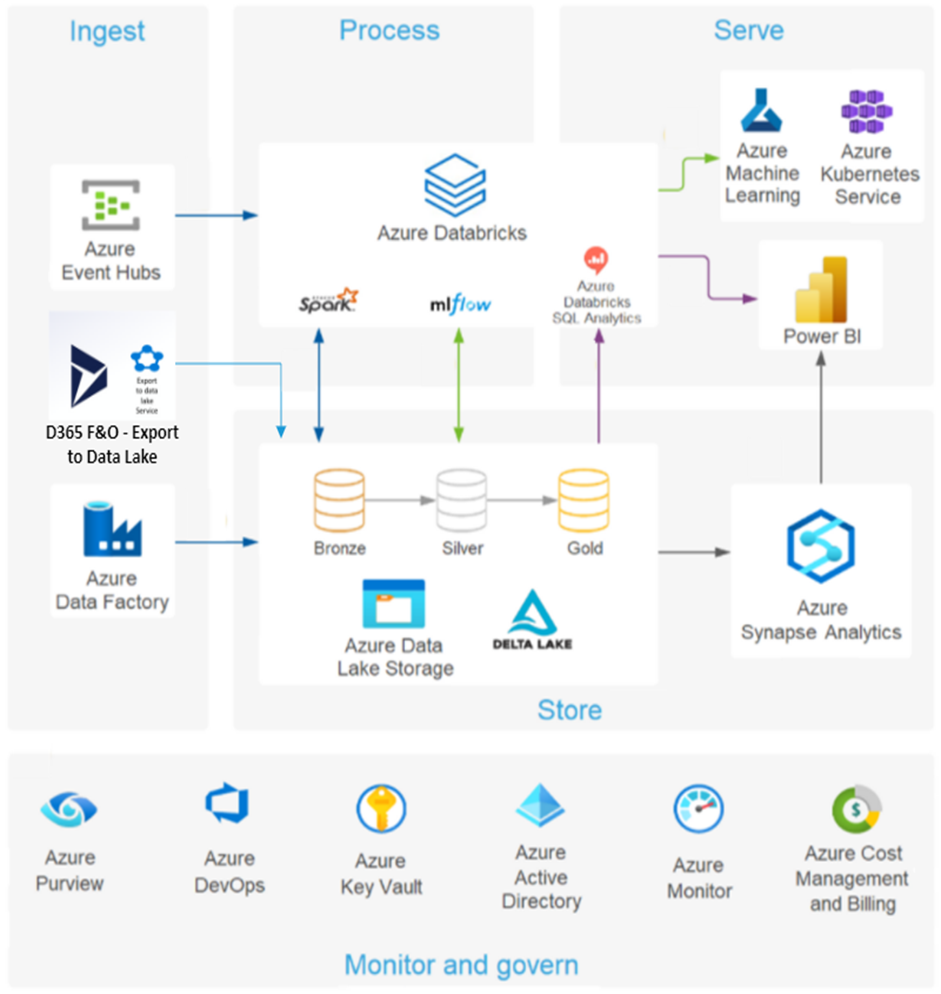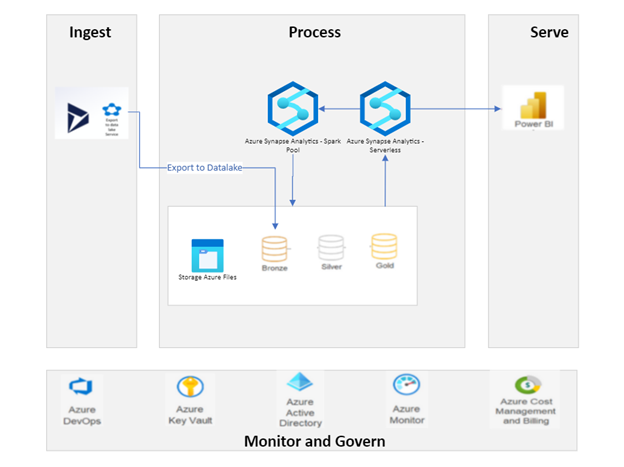Q&A Blog Categories
Supply Chain
Change Management
Business Intelligence
Project Cost Management
Managed Services
Enterprise Asset Management
ERP Implementation Projects
Construction Finance
ERP Project Managers
Construction ERP Pain Points
Women in Construction and Why it Matters – to Everyone
On-Premise, and Other Construction ERP Insights
Real Cost of Procession Union Payroll Manually
AI in construction
ERP User Adoption
Construction ERP Visibility
Changes in Construction Technology
Scott Graham | SIS Delivery Manager, BI
![]() Interview by: Sarah D. Morgan, SIS Senior Marketing Manager
Interview by: Sarah D. Morgan, SIS Senior Marketing Manager

Today we are speaking with Scott Graham, Delivery Manager, Business Intelligence at SIS, where he talks about the passing of BYOD to Data Lake, the reasoning, our approach, and the benefits.
Microsoft describes Data Lake Analytics as “using your existing IT investments for identity, management, and security. This approach simplifies data governance and makes it easy to extend your current data applications. Data Lake Analytics is integrated with Active Directory for user management and permissions and comes with built-in monitoring and auditing.”
What we’ve learned at SIS is that you can connect D365 F&O to a Data Lake to unlock insights hidden in your data with near real-time updates, where the environment is fully managed. You can select data by tables or entities using Power BI, and Azure synapse enabled analytics. This is because Data Lake storage is cheaper and exiting downstream consumption pipes are preserved.
Q: Scott, what can you tell us about your experience with technology?
A: I’ve been working with ERP data and data warehousing since 2008. Worked a lot of years with SAP – and the last five years with the Microsoft stack.
Q: When it comes to BI, what is going on in the market that makes the Data Lake conversation a priority?
A: Companies are migrating their systems to the cloud and looking to democratize their data. To use their data to answer analytical questions as well as enable machine learning. Microsoft’s Azure cloud is a leader in cloud as well as a leader in Analytics. Analytics has also moved into the cloud to enable this.
Q: Currently, are AX2012 and D365 clients are utilizing “BYOD” – Bring Your Own Database?
A: Yes. Exporting data into their own SQL server with BYOD. Now we are seeing clients moving into cloud Data-Lake centric designs and wanting to connect D365 to a data lake. Export to Data lake will help facilitate that migration to a data lake cloud data design. You can connect to an existing Data Lake or bring on a new one. Microsoft will handle all the management of the ETL from D365 F&O to the data lake. Supplying complete and timely data to start you on your analytics journey. Data Lakes are an affordable and scalable way to store data.
Q: What are a few Client Scenarios?
A: 1. Client may have an existing BYOD and D365. MSFT’s road map is to have clients move into a Data Lake with Export to Data Lake from D365 F&O to replace BYOD.
- Client may have D365 F&O currently. Has a desire to move into Azure Analytics. To perform further Analytics with D365 F&O data.
Q: What is the SIS Methodology to make this happen?
A: SIS has developed and is continuing to invest in Analytic packages that target the construction, engineering, energy, government, and professional services industries. We are building this out with the knowledge that SIS has from working alongside these industries for the past 25 years. We have a suite of dashboards and a cloud architecture that these industries can use to gain valuable insights into their business. These dashboards are delivered along with a modern cloud data platform in Azure. Once installed and configured, this platform will allow clients the ability to utilize the base package and the ability to expand their data analytics platform. It is all based on industry-standard architecture. It allows Ingesting of Data from D365 and many other sources that can be cloud or on-premise. The platform will store, process, and serve the data to end consumers.
- Modern Analytic tools with Data Lake, Synapse, Data Bricks, Power BI
- Connect D365 to an Azure Data Lake to unlock insights hidden in your data
Q: What outcomes do you see?
A: Analytics will be cloud-based. If you are a D365 F&O shop looking to become one. It’s natural to want to harness your EPR data for operational and analytical reporting. The data lake architecture will help that. And allow an affordable architecture to do it. Azure has all the tools to bring in other data into the lake. Be it on-premise or in the cloud. And to secure your data. It will allow you to retire BYOD. And can be a central hub for a downstream data mart or enterprise data warehouse. With export to data lake, many other use cases can be built up for:
- Operational Reporting
- Analytics
- Data Mashup
- Cost-effective repository of structured and nonstructured data
- Drive decision enablement
- Provide data and a platform for machine learning
- Modern Data Warehouse
- Separation of Storage and Compute
Q: What are the benefits of migration from BYOD to Export to Data Lake?
A: Data Lake is cost-effective storage that is scalable to petabytes of data. Where storage and compute are separated. Downstream consumption can be maintained.
- Access D365 Table data for multiple use cases.
- Data lake can be a source to populate an EDW or data mart.
- Supply data for Power BI Dashboards and Reports.
- Supply data for AI and Machine learning use cases.
- Near real-time data updated into Data Lake (in preview).
- Data is kept up to date by the data lake.
- Export to Azure Data Lake is an add-on service that is included with your subscription to Dynamics 365 Finance and Operations.
Q: What resources can people use to learn more?
1. Export to Azure Data Lake overview – Finance & Operations | Dynamics 365 | Microsoft Docs
2. Azure Data Lake Storage Gen2 Introduction | Microsoft Docs
Q: What opportunities are we offering to help our customers and prospects learn more?
A: Q and A session with a SIS panel composed of D365 experts and Analytics experts; schedule your Q & A session below!


